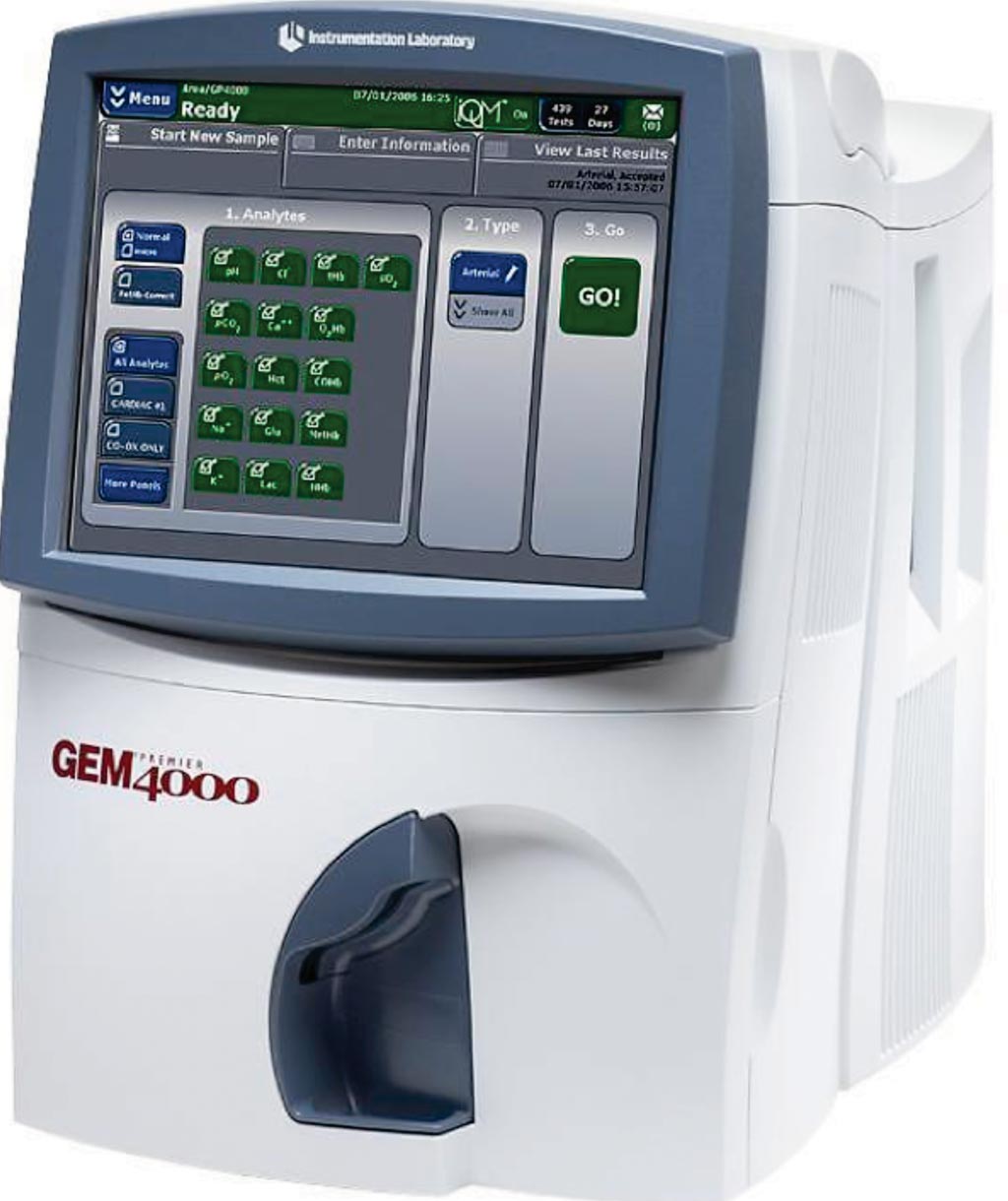Umbilical Cord Bilirubin Predicts Neonatal Jaundice
By LabMedica International staff writers
Posted on 17 Oct 2017
Hyperbilirubinemia is one of the commonest causes of admission to hospital in the neonatal period amongst term babies in all settings. Prevention of serious complications depends on effective early treatment, but clinically significant jaundice may not develop until one or more days after delivery.Posted on 17 Oct 2017
Identification of biomarkers that could be measured within a few hours following birth, which robustly predict incident jaundice, would represent a significant advance. Estimation of umbilical cord blood bilirubin (UCB) at delivery is practicable, cheap and non-invasive. It could be easily integrated with the current trend towards routine umbilical cord blood biochemical evaluation practiced in many centers.

Image: The GEM 4000 whole blood analyzer (Photo courtesy of Werfen UK).
Neonatal specialists at Homerton University Hospital (London, UK) carried out a retrospective analysis of hospital biochemistry records identified term deliveries with recorded arterial UCB (aUCB). Infant medical records were reviewed to identify those who developed neonatal hyperbilirubinemia requiring treatment according to UK NICE guidelines, with/without a positive direct antiglobulin test (DAT). Over the 9-month period, there were 4,069 inborn deliveries, on who umbilical cord blood analysis had been performed on 2,128 (52.2%). The neonatal unit is equipped with a GEM 4000 whole blood analyzer, which automatically provides total bilirubin estimation on samples.
Of 1,411 term deliveries with a clearly recorded aUCB, 30 infants developed clinically significant jaundice (2.7%), of whom eight were DAT + ve (0.6%) mostly due to ABO incompatibility. aUCB strongly predicted the development of DAT + ve jaundice, as well as all-cause jaundice. However, this effect was critically dependent on maternal blood group. Amongst infants at risk of ABO incompatibility (maternal blood groups O+ve/O-ve, 39.7%) the predictive value of aUCB for all cause jaundice was strengthened. Amongst those not at risk (defined maternal blood group not O+ve/O-ve, 51.0%) it disappeared completely. A cutoff of 35 μmol/L for mothers with blood group O+ve/O-ve increased the pre-test probability for all-cause jaundice of 4% to a post-test probability of 30%.
The authors concluded that for infants of mothers with blood group O, aUCB predicts development of neonatal jaundice. There was no evident utility for infants of mothers with other blood groups. Estimation of aUCB should be considered as a strategy for early identification of those at risk of neonatal hemolytic jaundice. The study was published on September 20, 2017, in the journal BMC Pediatrics.
Related Links:
Homerton University Hospital













